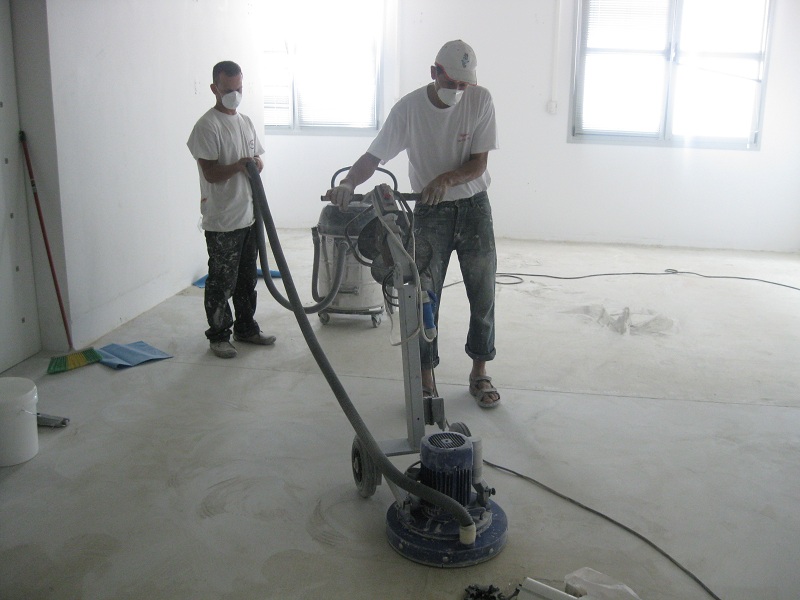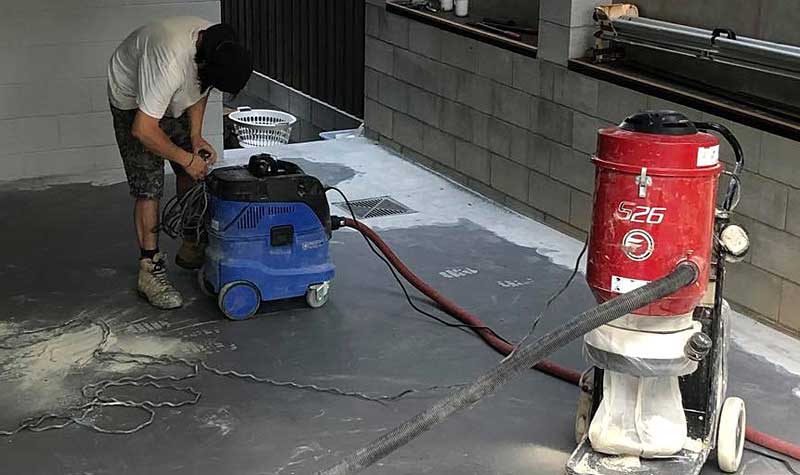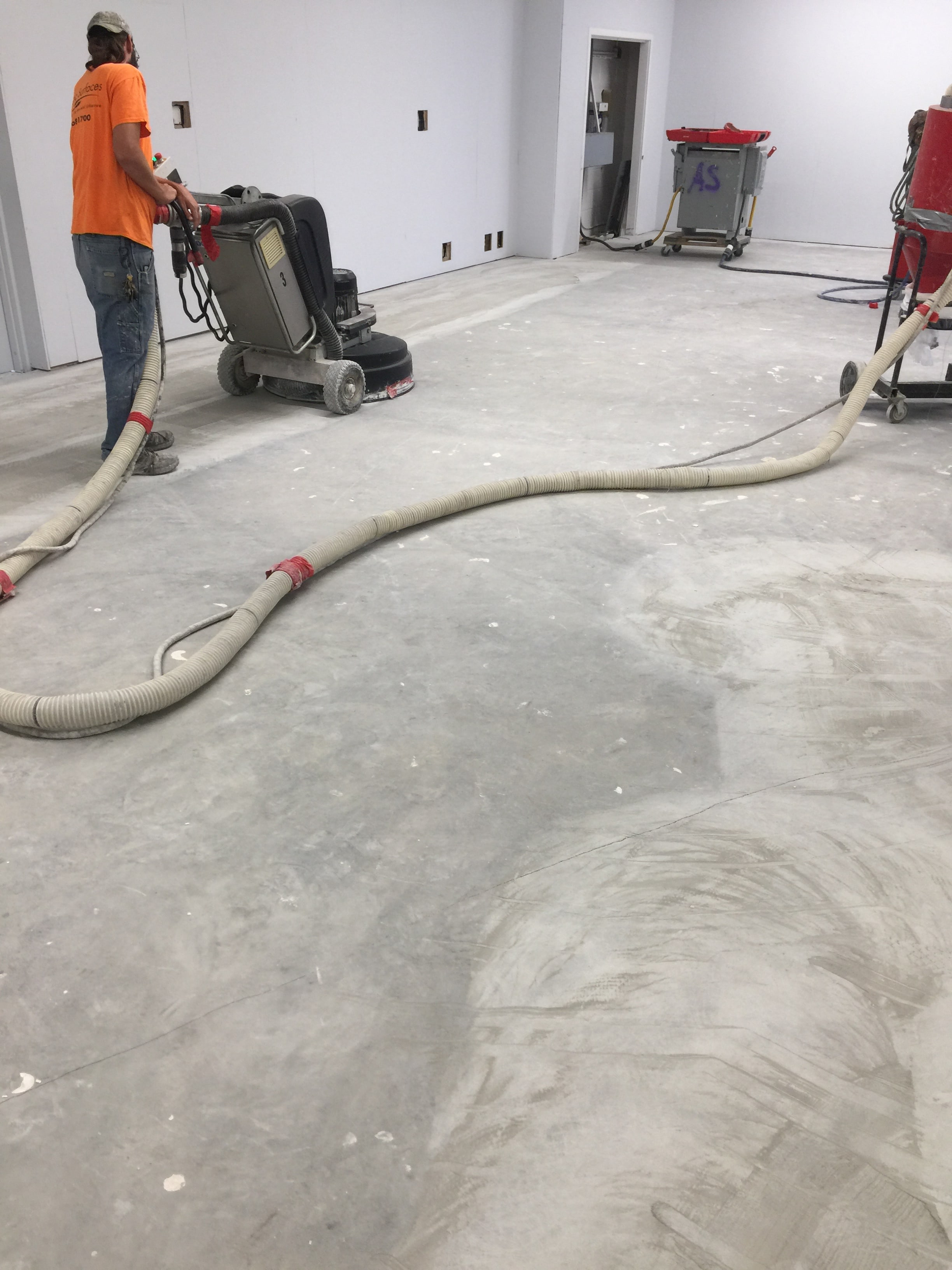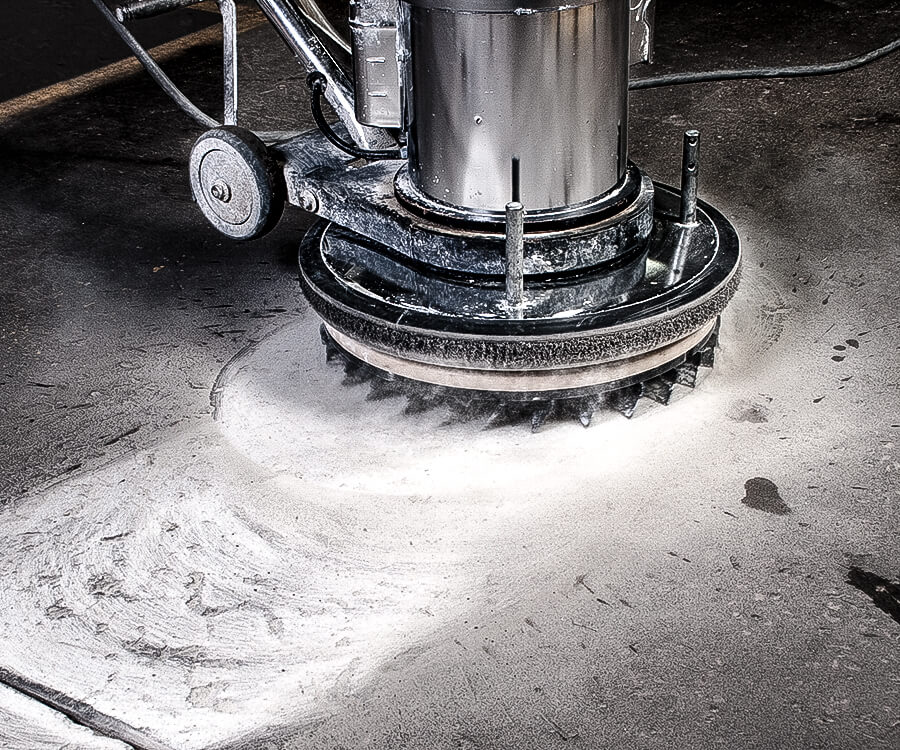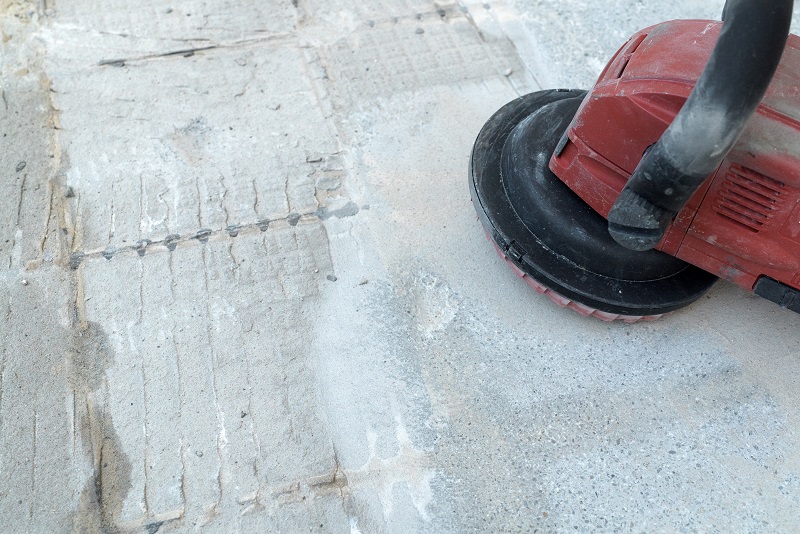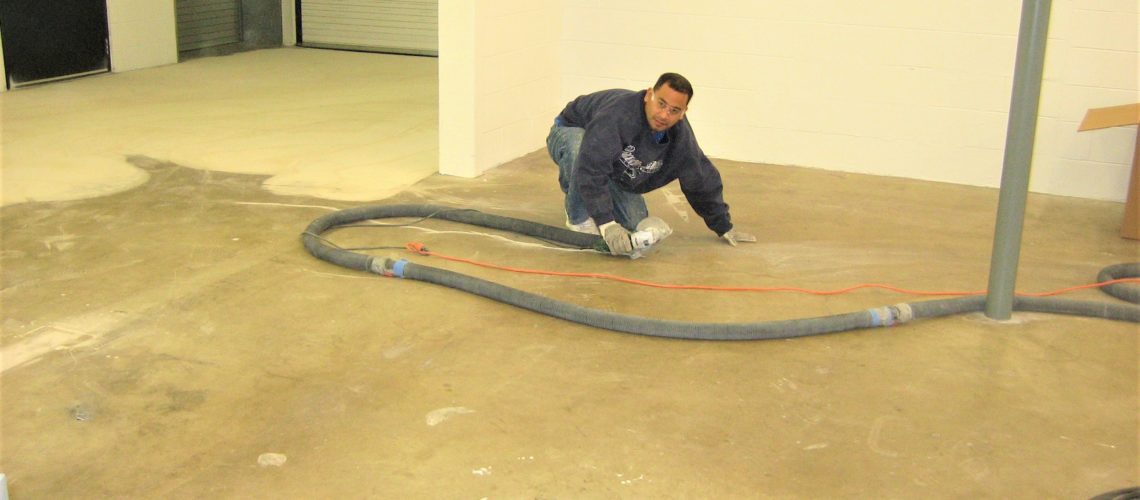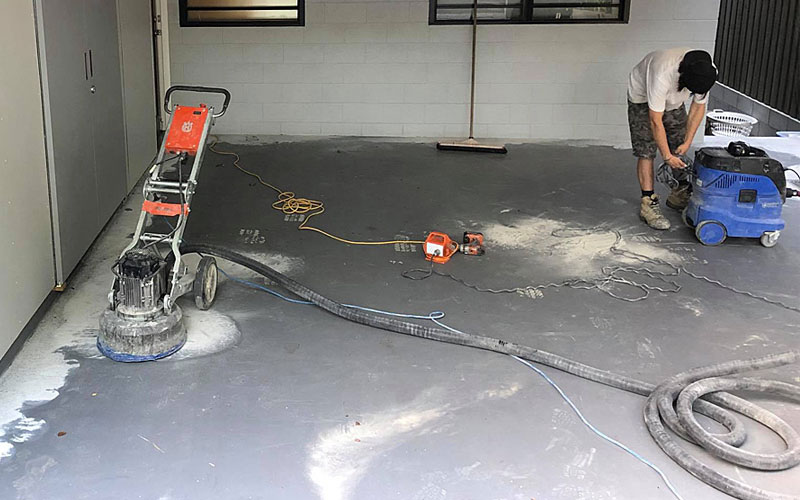Understanding the Importance of Floor Preparation for Epoxy Coatings
When it comes to applying epoxy coatings to your floors, proper floor preparation is crucial. Floor preparation sets the foundation for a successful epoxy application and ensures long-lasting, durable results. Let’s talk about the importance of floor preparation for epoxy coatings and why it should never be overlooked.
-
Enhances Adhesion: Proper floor preparation is essential to achieve optimal adhesion between the epoxy coating and the substrate. By thoroughly cleaning and preparing the floor surface, you remove any contaminants, dirt, and grease, creating a clean canvas for the epoxy to bond with. This strong bond not only improves the durability of the coating but also prevents premature peeling or delamination.
-
Ensures Even Application: Floor preparation helps to create a smooth and even surface, which is crucial for achieving a flawless epoxy application. By addressing any cracks, chips, or unevenness in the floor, you can ensure that the epoxy coating is applied evenly, resulting in a visually appealing and professional finish.
-
Increases Longevity: Properly preparing the floor surface before applying epoxy coatings significantly increases the longevity of the coating. By removing any existing coatings, patching up cracks, and addressing underlying issues, you create a solid foundation that can withstand heavy foot traffic, chemical spills, and other potential damages. This not only saves you money in the long run but also reduces the need for frequent repairs and reapplications.
-
Minimizes Maintenance: By investing time and effort in floor preparation, you can minimize the maintenance required for your epoxy-coated floors. A well-prepared surface prevents the accumulation of dirt, dust, and grime, making it easier to clean and maintain the floors over time. Additionally, a properly prepared floor is more resistant to staining and damage, reducing the need for frequent cleaning or repairs.

Steps to Achieve a Properly Prepared Surface for Epoxy Application
Achieving a properly prepared surface is crucial for the successful application of epoxy coatings. We will discuss the step-by-step process to ensure your floor is thoroughly prepared before applying epoxy. Following these steps will help you achieve a flawless and durable epoxy coating.
-
Clear the Area: Start by removing all furniture, equipment, and debris from the area you plan to coat with epoxy. A clear workspace allows you to work efficiently and ensures that no items interfere with the floor preparation process.
-
Clean the Floor: Thoroughly clean the floor surface to remove any dirt, dust, grease, or other contaminants. Sweep or vacuum the area to eliminate loose debris, and then use a suitable cleaner to wash the floor. Pay special attention to oil stains or any other stubborn spots, as they may require additional cleaning or degreasing agents.
-
Repair Cracks and Imperfections: Inspect the floor for any cracks, chips, or imperfections. Use a suitable epoxy crack filler or patching compound to repair these areas. Follow the manufacturer’s instructions for proper application and drying time. Ensure that all repaired areas are smooth and level with the surrounding floor surface.
-
Etch or Mechanical Abrasion: Depending on the type of floor and epoxy coating you are using, you may need to etch the surface or mechanically abrade it to promote adhesion. Etching involves using an acid or chemical solution to create a rough surface that allows the epoxy to grip better. Mechanical abrasion, such as sanding or diamond grinding, can also be used to achieve the same result. Follow the specific guidelines provided by the epoxy manufacturer for the best results.
-
Clean Again and Allow to Dry: After etching or mechanical abrasion, thoroughly clean the floor again to remove any residue or dust. Allow the floor to dry completely before proceeding with the epoxy application. Moisture can interfere with the bonding process and compromise the durability of the coating.
Tools and Equipment Needed for Effective Floor Preparation
To achieve effective floor preparation for epoxy coatings, having the right tools and equipment is essential. Let’s discuss the tools and equipment needed to properly prepare your floor for the application of epoxy coatings. By having the right tools at your disposal, you can ensure an efficient and successful floor preparation process.
Protective Gear: Before starting any floor preparation work, it’s crucial to prioritize safety. Wear appropriate protective gear, including safety goggles, gloves, a respirator or mask, and clothing that covers your skin. This will protect you from potential hazards such as chemicals, dust, and debris.
Cleaning Tools: To clean the floor surface thoroughly, you will need a range of cleaning tools. These may include brooms, dustpans, vacuums, and mops for removing loose debris, dirt, and dust. Additionally, you may require scrub brushes, sponges, or scrubbing machines to effectively clean stubborn stains or contaminants.
Crack Repair Tools: If your floor has cracks or imperfections, you will need specific tools for repairing them. These may include a crack chaser or diamond blade for widening cracks, a trowel or putty knife for applying epoxy crack filler or patching compound, and sandpaper or a sander for smoothing out the repaired areas.
Etching or Abrasion Tools: Depending on the method you choose for surface preparation, you will need suitable tools. For etching, you may require a sprayer or brush for applying the etching solution, as well as a neutralizer to stop the etching process. If you opt for mechanical abrasion, you may need a floor grinder, sander, or diamond grinding tool to achieve the desired surface texture.
Safety Equipment: In addition to protective gear, you may need specific safety equipment depending on the floor preparation method. For example, if you are using chemicals for etching or cleaning, you may require chemical-resistant gloves, goggles, and boots. If you are using mechanical abrasion tools, you may need hearing protection and dust extraction equipment to minimize exposure to noise and dust.
Common Mistakes to Avoid During the Floor Preparation Process
Floor preparation for epoxy coatings requires attention to detail and careful execution. However, there are common mistakes that people often make during this process, which can negatively impact the final results. We will discuss some of the common mistakes to avoid during the floor preparation process to ensure a successful epoxy coating application.
Insufficient Cleaning: One of the most common mistakes is not thoroughly cleaning the floor surface before applying epoxy. Failing to remove dirt, dust, grease, or other contaminants can hinder proper adhesion and result in a weak bond between the epoxy and the floor. Take the time to clean the floor diligently, using suitable cleaning agents and tools, to ensure a clean and debris-free surface.
Inadequate Crack Repair: Neglecting to properly repair cracks or imperfections in the floor can lead to problems later on. If cracks are not filled and smoothed out, the epoxy may not adhere properly, causing it to crack or delaminate over time. Follow the manufacturer’s instructions for crack repair products and ensure that the repaired areas are level with the rest of the floor surface.
Rushing the Etching or Abrasion Process: Etching or mechanical abrasion is crucial for promoting adhesion between the epoxy and the floor surface. However, one common mistake is rushing through this step. Insufficient etching or inadequate abrasion can result in poor adhesion and premature coating failure. Follow the recommended guidelines provided by the epoxy manufacturer and give the surface enough time to properly etch or abrade.
Ignoring Moisture Issues: Moisture-related issues can severely impact the performance of epoxy coatings. Failure to address moisture problems, such as high humidity or moisture trapped in the concrete, can lead to coating failures, bubbling, or delamination. Conduct a moisture test before applying epoxy and take necessary measures to mitigate any moisture issues.
Skipping the Primer: Using a primer is often recommended before applying epoxy coatings, especially on porous or uneven surfaces. Skipping the primer can result in poor adhesion and a compromised final finish. Always follow the manufacturer’s instructions and apply the appropriate primer if recommended for your specific flooring situation.
Tips for Achieving Long-lasting and Durable Epoxy Floor Coatings
Achieving long-lasting and durable epoxy floor coatings requires careful planning and execution. Below we provide some valuable tips to help you achieve the best results and maximize the lifespan of your epoxy-coated floors.
Choose the Right Epoxy System: Selecting the appropriate epoxy system for your specific needs is crucial. Consider factors such as the type of substrate, intended use of the floor, and environmental conditions. There are different epoxy formulations available, including high-performance options for heavy-duty applications. Consult with epoxy manufacturers or professionals to determine the best system for your requirements.
Follow Proper Mixing and Application Procedures: Properly mixing and applying the epoxy is essential for achieving a strong and durable coating. Follow the manufacturer’s instructions carefully, including the recommended mixing ratios and application techniques. Improper mixing or application can result in coating failures or inconsistencies in the finish.
Apply Multiple Coats: Applying multiple coats of epoxy can enhance the durability and longevity of the coating. Multiple coats provide a thicker layer and better protection against wear and tear. Ensure that each coat is applied within the recommended time frame, allowing the previous coat to cure properly before applying the next.
Allow Sufficient Curing Time: Proper curing time is crucial for the epoxy to fully harden and achieve its maximum strength. Avoid heavy foot traffic or placing heavy objects on the floor until the epoxy has fully cured. Follow the manufacturer’s recommendations for curing time and environmental conditions to ensure optimal results.
Practice Regular Maintenance: To extend the lifespan of your epoxy-coated floors, implement a regular maintenance routine. Sweep or vacuum the floor regularly to remove debris and prevent scratching. Clean spills promptly to avoid staining or damage. Additionally, periodically inspect the floor for any signs of wear or damage and address them promptly to prevent further deterioration.
Choose the Right Surface Preparation Method to Avoid Flooring
Ryan Amato Painting How to properly prepare your concrete for
Surface Preparation in Epoxy Flooring: Explaining the different
Concrete Prep Plus Tool – Prep Floors for Paint, Epoxy, or Carpet
A Guide to Comparing Epoxy Floor Coatings
How to Prep Concrete for Epoxy or Urethane Coatings – ThermalChem
DIY Epoxy Flooring – What to Be Aware Of Toughfloors
Surface Preparation for Commercial Floors – Sealwell
Related Posts:
